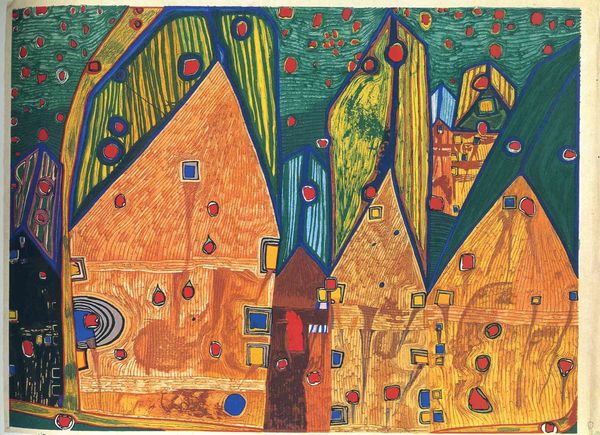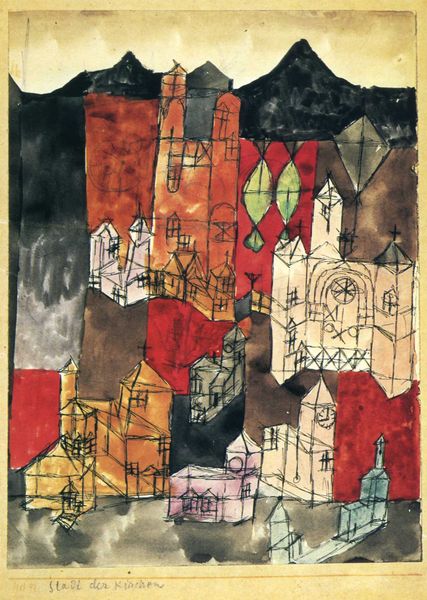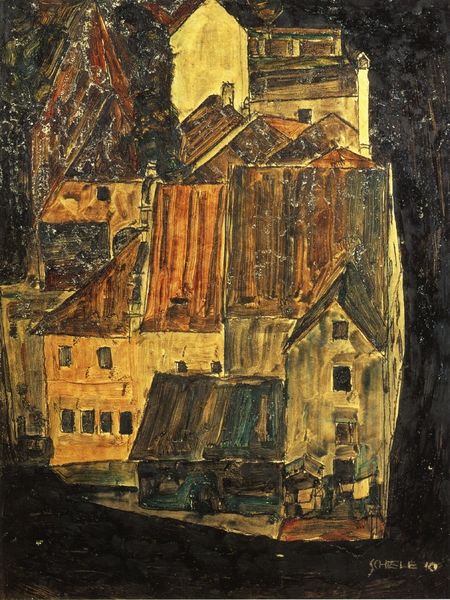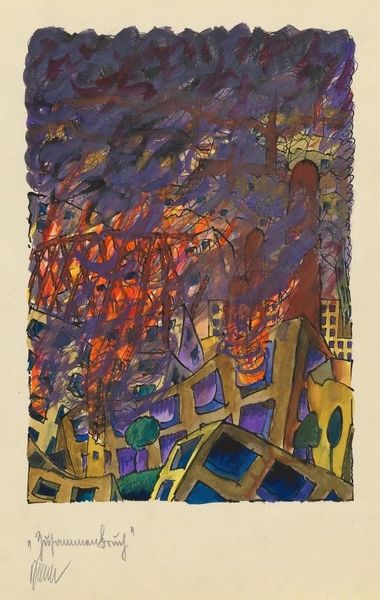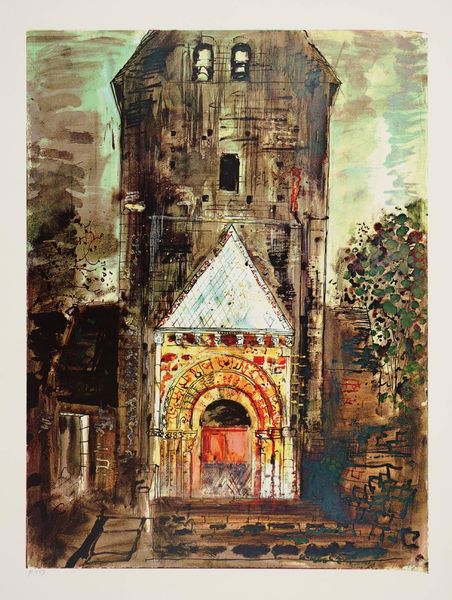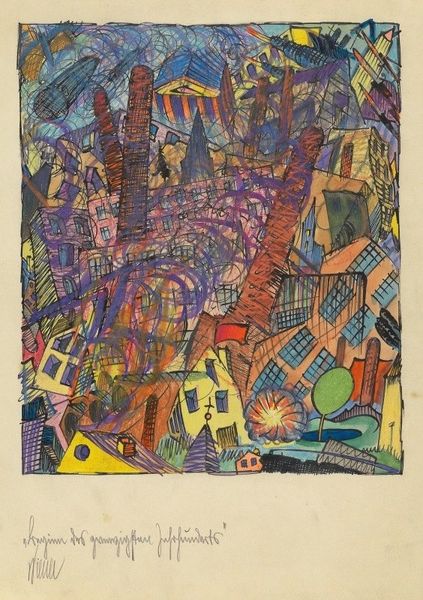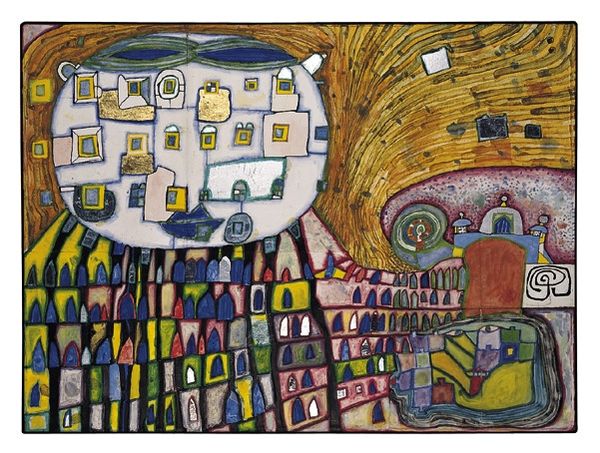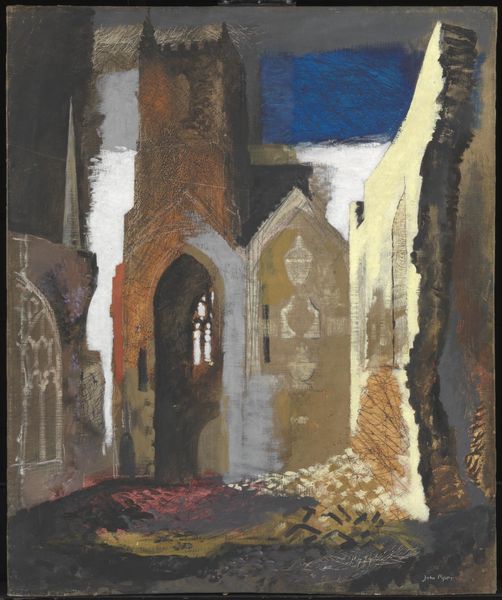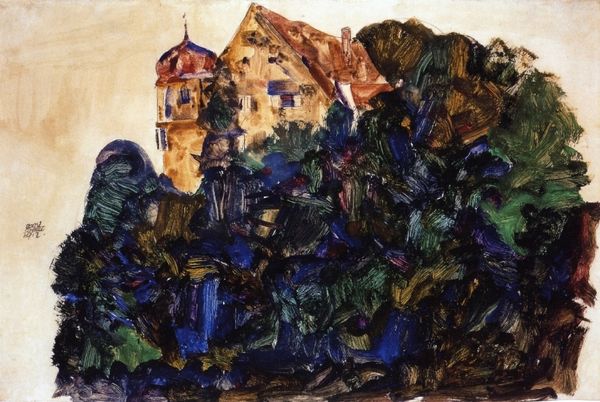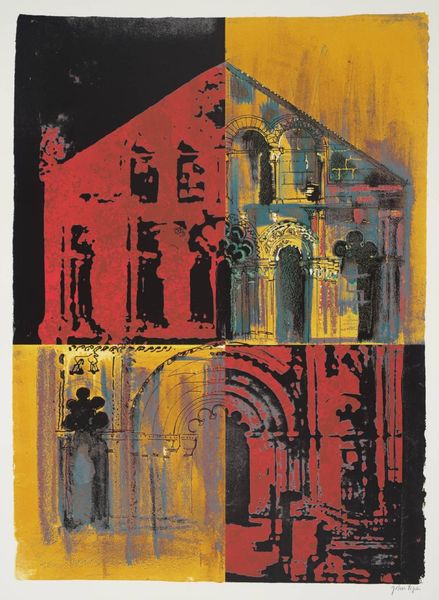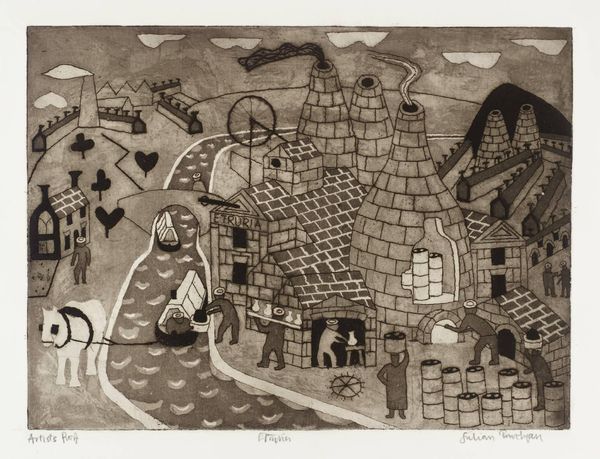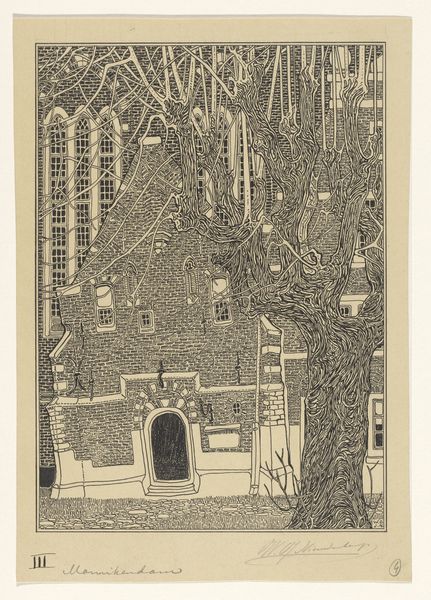
painting, watercolor
#
painting
#
stain glass
#
watercolor
#
geometric
#
naive art
#
cityscape
#
watercolour illustration
#
watercolor
Copyright: NAMIDA AG, Glarus (displayed with the permission of Hundertwasser Non-Profit Foundation) The displayed work of art is protected under the copyright law. In particular, it is not permitted to reproduce, to alter, to print or to publish these works of art. Violations will be prosecuted according to civil and criminal law.
Curator: Hundertwasser's "104 Cathedral I," created in 1951 using watercolor, presents a fascinating lens through which to examine postwar anxieties around urban reconstruction. Editor: My immediate impression is its naive charm! The vibrant watercolors create this dreamlike, almost distorted cityscape, yet grounded in a sense of architectural geometry. Curator: Precisely. Consider the sociopolitical backdrop. Post-war Europe was grappling with rebuilding not only physical structures but also societal frameworks. Hundertwasser, through his art, challenges conventional notions of urban planning and architecture, offering instead a vision rooted in organic forms and individuality. The so-called "naive" quality speaks to a yearning for simpler, less rigid structures. Editor: I see that. The texture almost suggests stained glass—an effect achieved by layering colors. Note, for example, how the overlapping blues and greens build the structures. This deliberate manipulation calls attention to the surface as a site of meaning. Curator: Yes, the layering creates a deliberate sense of permeability and transparency, mirroring the fractured realities of the time. It's crucial to view this work not just as an aesthetic piece but as a statement, a silent manifesto, against the oppressive grid of modern urbanism. This was a time when cities were increasingly seen as spaces of alienation and control. Hundertwasser subtly reclaims these spaces, suggesting a future built on collaboration with nature, as seen in his architectural designs of building in and with nature. Editor: The dynamism is palpable! The irregular shapes resist easy categorization, making us question the relationship between order and chaos. It is far removed from traditional representations of cityscape, right? Curator: Exactly! And let's acknowledge the broader discourse on urban identity during the mid-20th century. Artists, architects, and social theorists were intensely engaged in conversations around creating spaces that truly reflected and served the needs of the population. Hundertwasser's art, even through its "naive" facade, directly intervenes in this discourse. Editor: Ultimately, this close look reveals a complex interplay of artistic technique, social awareness, and even political commentary. Curator: I concur, recognizing art's profound capability to engage with complex social concerns and offer alternative imaginaries is how we glean a complete interpretation of art.
Comments
No comments
Be the first to comment and join the conversation on the ultimate creative platform.

